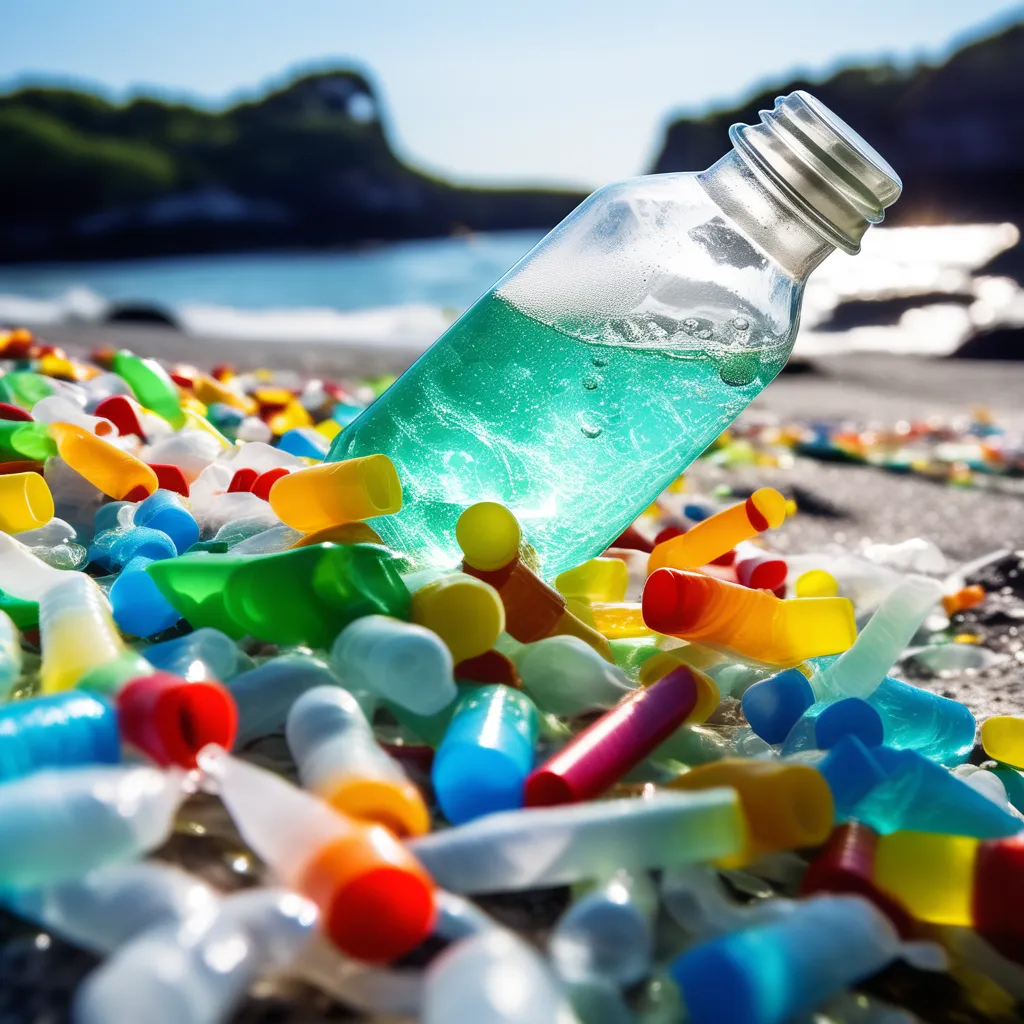Breakthrough: Plastic-Eating Enzyme Cleans Up Waste
Imagine a world where plastic waste, a global scourge that clogs our oceans and landfills, could be devoured by a natural enzyme, leaving behind no harmful residue. It may sound like a dream, but it's becoming a reality with a breakthrough plastic-eating enzyme. As someone who's witnessed the environmental damage caused by plastic pollution, I can't help but feel a glimmer of hope for a cleaner, more sustainable future.

A Personal Connection
Growing up near a picturesque river, I spent countless hours exploring its banks, fascinated by the rich biodiversity it hosted. However, as the years passed, I watched in dismay as plastic waste started to choke this once-pristine waterway. It was a stark reminder of the urgent need to address plastic pollution.
Plastic Predicament
The sight of plastic bags tangled in aquatic plants and discarded bottles bobbing downstream was disheartening. I realized that we were facing a monumental problem—one that required innovative solutions.
The Plastic-Eating Enzyme
Enter the plastic-eating enzyme, a groundbreaking discovery in the realm of environmental science.
Nature's Solution
The enzyme, known as PETase, was first discovered in bacteria at a recycling plant in Japan. It had the remarkable ability to break down polyethylene terephthalate (PET), a common plastic used in bottles and containers.
How It Works
PETase works by breaking the chemical bonds that hold PET together, effectively digesting plastic and turning it into environmentally benign substances.
Promising Applications
The implications of the plastic-eating enzyme are far-reaching and offer hope for tackling the plastic pollution crisis.
Waste Reduction
By breaking down PET plastics, this enzyme can significantly reduce the volume of plastic waste in landfills and oceans.
Recycling Enhancement
The enzyme can also enhance plastic recycling processes, making them more efficient and environmentally friendly.
The first time I learned about PETase, I couldn't help but marvel at the ingenuity of nature. It was a powerful reminder that solutions to our environmental challenges may already exist in the natural world.
Challenges and Future Developments
While the plastic-eating enzyme holds great promise, challenges and further developments lie ahead.
Scaling Up
Scaling up the enzyme's production for widespread use in plastic degradation will require significant research and investment.
Other Plastic Types
PET is just one type of plastic. Researchers are now working to discover enzymes capable of breaking down other plastics like polypropylene and polystyrene.
A Sustainable Future
The breakthrough plastic-eating enzyme serves as a beacon of hope in the fight against plastic pollution.
Public Awareness
It underscores the importance of public awareness and responsible consumption to reduce plastic waste.
Scientific Innovation
The discovery highlights the power of scientific innovation in addressing pressing environmental challenges.
Collective Responsibility
Ultimately, addressing plastic pollution is a collective responsibility.
Reducing Plastic Use
Reducing our use of single-use plastics and embracing reusable alternatives can help mitigate the problem.
Supporting Research
Supporting research into plastic-eating enzymes and sustainable recycling technologies is crucial for long-term solutions.
A Cleaner Tomorrow
In conclusion, the plastic-eating enzyme represents a remarkable leap forward in our quest for a cleaner, more sustainable planet. It's a testament to human ingenuity and the potential for nature-inspired solutions to our most pressing environmental problems.
As we look to the future, let's embrace this innovation and continue working together to reduce plastic pollution, preserve our natural habitats, and leave a healthier planet for generations to come.

No comments:
Post a Comment